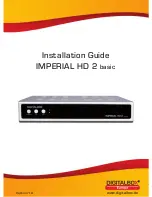
Using the AUX source
Up to two auxiliary devices such as VCR or
portable devices (sold separately) can be con-
nected to this unit. When connected, auxiliary
devices are automatically read as AUX sources
and assigned to
AUX1
or
AUX2
. The relation-
ship between
AUX1
and
AUX2
sources is ex-
plained below.
About
AUX1
and
AUX2
There are two methods to connect auxiliary de-
vices to this unit.
AUX1
source:
When connecting auxiliary equipment using a
stereo mini plug cable
%
Insert the stereo mini plug into the
input jack on this unit.
For more details, refer to the installation man-
ual.
This auxiliary device is automatically set to
AUX1
.
AUX2
source:
When connecting auxiliary equipment using an
IP-BUS-RCA Interconnector (sold separately)
%
Use an IP-BUS-RCA Interconnector such
as the CD-RB20/CD-RB10 (sold separetely)
to connect this unit to auxiliary equipment
featuring RCA output.
For more details, refer to the IP-BUS-RCA Inter-
connector owner
’
s manual.
This auxiliary device is automatically set to
AUX2
.
#
You can only make this type of connection if
the auxiliary device has RCA outputs.
Selecting AUX as the source
%
Press SRC to select AUX as the source.
#
If the auxiliary setting is not turned on,
AUX
cannot be selected. For more details, see
Switch-
ing the auxiliary setting
on page 27.
Setting the AUX title
The title displayed for the
AUX1
or
AUX2
source can be changed.
1
After you have selected AUX as the
source, use MULTI-CONTROL and select
FUNCTION to display TITLE INPUT.
2
Enter a title in the same way as the
built-in CD player.
For details concerning operation, refer to
En-
tering disc titles
on page 16.
Turning the clock display
on or off
You can turn the clock display on or off.
!
Even when the sources are off, the clock
display appears on the display.
%
Press CLOCK to turn the clock display
on or off.
Each press of
CLOCK
turns the clock display
on or off.
#
The clock display disappears temporarily
when you perform other operations, but the clock
display appears again after 25 seconds.
Using the external unit
External unit refers to a Pioneer product (such
as ones available in the future) that, although
incompatible as a source, enables control of
basic functions with this unit. Two external
units can be controlled with this unit. When
two external units are connected, the external
unit is automatically allocated to external unit
1 or external unit 2 by this unit.
Other Functions
En
30
Section
05
















































